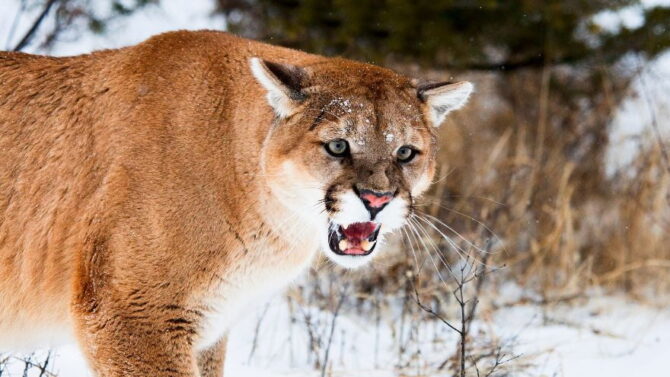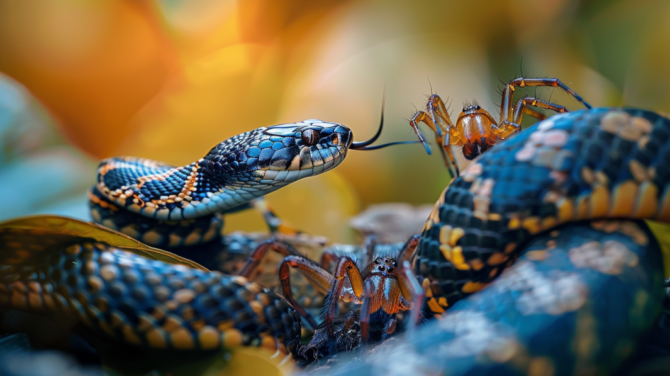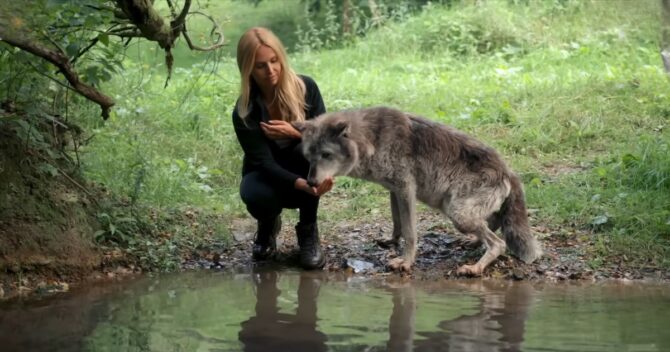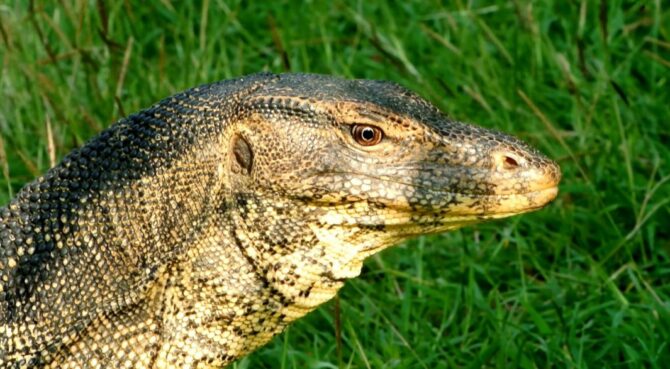The most dangerous animals in New Mexico notorious for their deadliness and ravaging behavior include poisonous snakes, venomous spiders, predatory mammals, etc. Hence, you should avoid them.
New Mexico is an enthralling place to visit and has diverse geographic locations suitable for thriving wildlife.
From its deserts and rivers to its forested wilderness, New Mexico is rich in nature’s good gift of biodiversity.
As such, the state is home to some of the deadliest animals in the United States.
What are the Most Dangerous Animals in New Mexico?
1. Rattlesnake
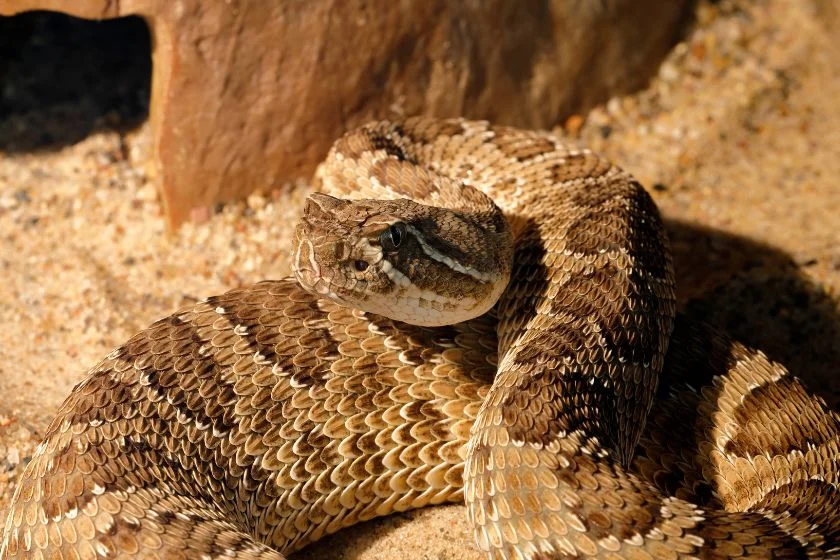
- Scientific Name: Crotalinae
- Classification: Reptiles
- Habitat: Swamps, scrub bush, grassland, deserts,
- Diet: Carnivore
- Conservation Status: Least Concern
Thriving deep in the hearts of New Mexico’s desert are some of the most dangerous rattlesnake species notorious for their deadly venoms.
Depending on the species of rattlesnake you come across, they may be as long as 8 feet.
Though it has a reputation for being brutal to prey, threat, and aggressive, rattlesnakes shy away from interacting with humans.
But this all changes once they identify humans to be threats.
The rattling of its tail is the most prominent warning signal it gives to threats before the full force of its attack begins.
Though their venoms are deadly, they rarely lead to death if proper medical care is provided.
2. Black Widow Spider

- Scientific Name: Latrodectus mactans
- Classification: Arachnid
- Habitat: Woodpiles, crevices, burrows, loose barks
- Diet: Carnivore
- Conservation Status: Least Concern
The reputation of the black widow spider as one of the most dangerous spiders on the planet is well established.
They are quite easy to identify as their black and red coloring makes them stand out.
As dangerous as the black widow spider is said to be, it avoids human interaction, but as with most wildlife, when push comes to shove, the predatory spider never backs from a fight.
Its primary weapon is its sharp bites and infusion of its venom, which causes tremendous pain to humans.
The venom of the black widow spider contains neurotoxins, and this may have extreme health complications for humans. However, it rarely leads to death.
3. Coral Snakes

- Scientific Name: Elapidae
- Classification: Reptiles
- Habitat: Leaf piles, underground burrows
- Diet: Carnivore
- Conservation Status: Least Concern
They may be small, but the danger they present to humans is not in proportion to their size.
Coral snakes have beautiful color markings, which makes them visible in the open.
But they thrive in leaf piles, and therefore, they may escape human attention. Coral snakes are also elusive, preferring to stay underground.
They do not relish human confrontation and thus would try to avoid contact with humans.
However, when in danger, they respond by fighting back with their fangs.
Coral snakes have short fangs, and as such, it is quite difficult for them to penetrate thick clothing.
But with even the slightest contact of the skin with their fangs, they can infuse their venoms in humans.
Their venom contains neurotoxins which can lead to paralysis of the respiratory muscles.
In the US, there are an average of 15 to 25 snake bites yearly credited to coral snakes and 2.5 million globally.
4. Arizona Bark Scorpion

- Scientific Name: Centruroides sculpturatus
- Classification: Arachnid
- Habitat: Logs, natural debris
- Diet: Carnivore
- Conservation Status: Least Concern
Another deadly creature that swarms New Mexico’s deserts and forests are the Arizona bark scorpion.
A nocturnal creature, it is regarded as the most dangerous scorpion in North America.
The small brown scorpion has a venom that causes severe pain in humans which can last up to 2 days.
Adult scorpion sting symptoms are reported to include everything from numbness to inflammation, shortage of breath, body spasms, particularly those in the neck and face, nausea, and high blood pressure.
Fortunately, these effects can be cured easily with home remedies or alacramyn treatment.
As deadly as it is, the small-sized scorpion avoids contact with humans but resorts to stinging when they feel threatened.
Their small size makes them undetected and thus leads to thousands falling victim to its sting yearly.
5. Brown Recluse Spider
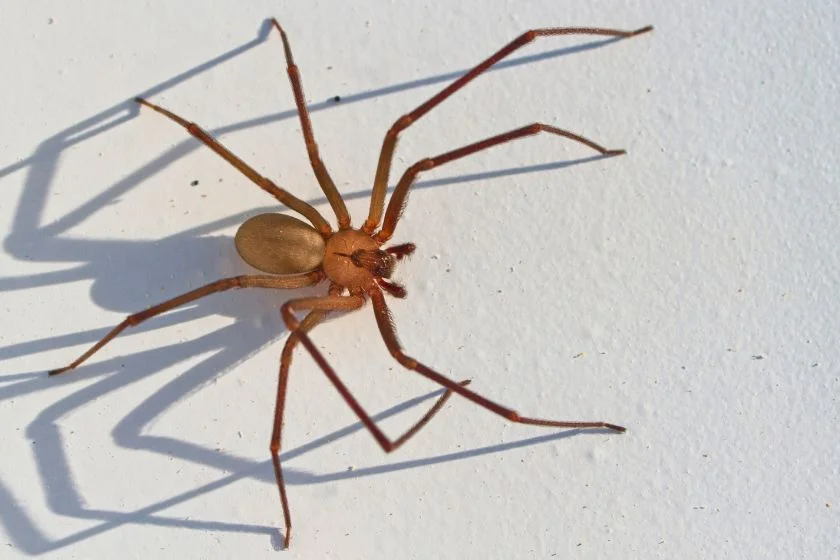
- Scientific Name: Loxosceles reclusa
- Classification: Arachnid
- Habitat: Logs, natural debris,
- Diet: Carnivore
- Conservation Status: Least Concern
A close relative to the black widow spider, the brown recluse spider presents as much danger as the former.
It is one of three spiders in the world that have medically significant venom, which makes them dangerous.
Though said to be brown, they mostly have a blackish gray color. As their name reveals, they are reclusive, shying away from confrontation with humans.
They respond to threats with bites, where they infuse their venom into victims.
The bites lead to loxoscelism and, in rare instances, hemolysis (bursting of red blood cells), organ damage, and death.
However, these are not to be expected in healthy adults.
6. Mountain Lion
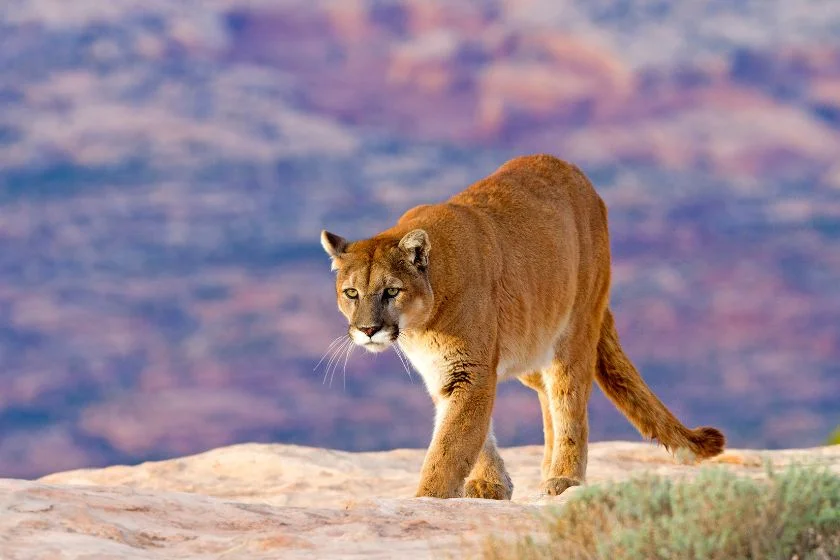
- Scientific Name: Puma concolor
- Classification: Mammal
- Habitat: Rocky canyons, steeps, mountainous terrains
- Diet: Carnivore
- Conservation Status: Least Concern
Known as the cougars, they dominate certain parts of New Mexico’s desert and forest areas.
They generally do not concern themselves with humans, but their aggressive nature and top-rated predatory abilities make them dangerous to humans who cross their paths.
They are territorial mammals, and should you wander in their territory, they may interpret such behavior as threats and attack ravagingly.
Also, they would hold no restraint should their young ones be endangered, so no matter how cute a baby cougar looks, stay away.
They are excellent stalkers; so keep in mind that while they may not be in the obvious places, your steps are being closely watched in territories occupied by cougars.
7. American Black Bear

- Scientific Name: Ursus americanus
- Classification: Mammal
- Habitat: Forests
- Diet: Omnivores
- Conservation Status: Least Concern
Sighting the American black bear can be very intimidating. These mammals weigh between 200 to 600 pounds and can be as tall as 6 feet.
Hence, their size is enormous, and they can be dangerous.
While they are not territorial and may show no interest in humans, they can be unpredictable.
Typically, when threatened, they resort to swatting the ground and emitting blowing noises.
Generally, they are less aggressive than most bears, but there are instances where they can be deadly.
They tend to attack due to hunger more than anything else. While they may not come off as aggressive as other bears, there have been instances where black bears have killed humans.
The most notable instance was in 1997, when an emaciated bear attacked a mother and her child, resulting in the death of the mother and a man who intervened.
8. Coyotes
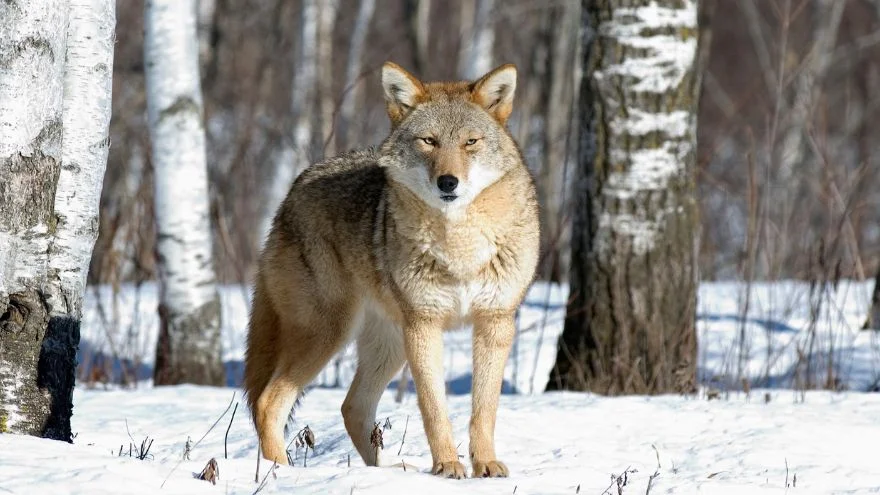
- Scientific Name: Canis latrans
- Classification: Mammal
- Habitat: Deserts, woodlands, oak savannah, sagebrush-steppe, subalpine forests
- Diet: Omnivores
- Conservation Status: Least Concern
As mischievous as they seem, coyotes are clever creatures that thrive in settlements near areas habited by humans.
This thus makes encounters with humans quite often.
The nocturnal creature may not seem harmful to humans as they tend to avoid encounters, but things can go awry in less favorable circumstances.
Though they do not hunt in packs, a lone human encounter with a pack of coyotes can lead to aggressive behavior and attacks.
Also, in instances where these creatures are ravagingly hungry, they may attack lone humans and pets. Hence the need to avoid coyotes.
New Mexico Wildlife Safety Tips
In line with directives by the US Forest Service, here are safety tips to note when dealing with wildlife or adventuring in areas habited by the most dangerous animals in New Mexico.
- Travel with a companion: It is recommended that up to 4 individuals travel through remote parts of New Mexico habited by wildlife. This may be necessary for situations that require emergency and when venturing into remote areas. It is also advised that a copy of your itinerary is left with a responsible individual not part of your travel party.
- Wear appropriate clothing as it suits your destination.
- Learn basic first aid as it comes in handy in emergencies.
- Do not travel in the dark: As night approaches, it is best that you make camp in suitable areas. Do not make camps near cliffs, and before nightfall, choose suitable areas in the terrain to make camp.
Conclusion
Adventuring through New Mexico can be a memorable and fun experience.
The state hosts stunning scenery, incredible natural formations, and amazing wildlife.
As you take in the wonders of New Mexico, prioritize your safety and those of your traveling companions.
